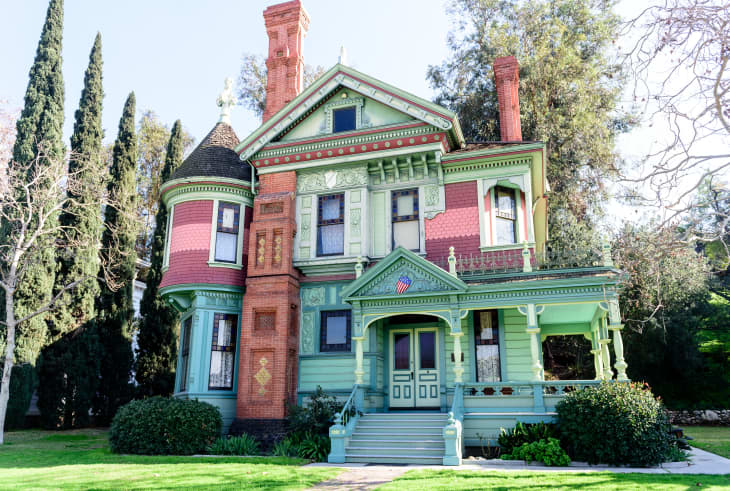The Best Cities for Buying a Vintage Historic Home

In the early days of the pandemic, hunkered down in the quiet darkness of yet another solitary Chicago evening, I sought solace in an old notebook. From this moment of desperation, boredom, and uncertainty, a list was born: “All the Stuff I’ll Do When This is Over.” Mostly a catalog of destinations to visit, from Palm Springs to Austria, one goal sticks out. Get a creaky house.
Perhaps fueled by too many viewings of Greta Gerwig’s Little Women paired with Two Buck Chuck, I’m not alone in my devotion to historic homes. The old-school character, the intriguing and quirky features, and the timeless craftsmanship each amplify these classic homes of a bygone era. For those looking to take part in the legacy of a historic home, there are a few key locations to start searching.
A recent study by air filter brand Filterbuy revealed that just 12.3 percent of American homes were built before the 1940s, making historic homes a treasured discovery. The study used census data to rank the U.S. cities with populations of at least 150,000 inhabitants that contain the most homes constructed before 1940. Below are the top ten ranked cities with vintage homes, as well as the location’s median home value.
- Buffalo, NY — $193,275
- Saint Louis, MO — $159,005
- Providence, RI — $309,035
- Rochester, NY — $193,052
- Cleveland, OH — $95,233
- Boston, MA — $693,096
- Pittsburgh, PA — $222,508
- San Francisco, CA — $1,502,029
- Minneapolis, MN — $329,763
- Worcester, MA — $336,149
Cities with a vast inventory of historical homes come in all shapes and sizes, and fall along a diverse range of price points and geographic regions. Whether you’re browsing the market for a vintage home right in your backyard, or if you’re willing to travel for your “new” historic digs, there are a few things you’ll want to take note of.
A Few Factors to Consider When Buying a Vintage Home
If you’re considering the purchase of a historic home, there are important upkeep factors to keep in mind. Some homes in historic neighborhoods may require specific and regulation restoration codes to be maintained.
While some vintage homes are well taken care of, others have extensive work that needs to be done to get them ship-shape. With the purchase of a new or older home come aspects that need to be factored into the budget and inspected properly, such as:
1. Lead Paint
This goes first because it needs to be in your deal breaker category. Houses built before 1978 are likely to have lead paint, and it is a major health issue. Lead paint abatement can fix the issue, but it’s costly. A lead paint test kit can be purchased from the local home improvement store to plan ahead.
2. Previous Renovations
Were renovations done properly? Have plumbing renovations been inspected? Get a structural engineer to come out and give the home and its renovations a sound analysis.
3. Roofing
Do you see signs of water damage and signs your roofing hasn’t been kept up? Major leaks, minor leaks, missing shingles, and punctures from branches are all indications that repair or a new roof is necessary. Inefficient roofing material and design will only lead to more damage throughout the years. Some inefficiencies are hard to spot, so it’s wise to have it inspected.
4. HVAC/Hot Water Heater
Are the heating and cooling systems reaching their expiration date? The inspector may tell you “in a few years,” but be prepared to factor the replacement in now as an expense, so you’re not scrambling for the cash later to get a new one.
5. Poor Insulation
Unfortunately, poor insulation is the curse of older homes. Parts of the house may be better insulated than others. Get quotes for redoing the insulation. To save on power and money, you can also DIY home insulation by using spray foam or caulking openings near windows, for example.
6. Old Wiring
You are required to be informed if old wiring poses a fire hazard or is faulty. Replacing the existing electrical system is expensive, and sometimes simple solutions fix small electrical issues. The old wiring is usually knob, tube or aluminum. Factor this into your budget, and have an electrician examine the home.
So, yes, buying a vintage home comes with its own set of challenges, but once restored or renovated, an older home is a jewel with an unparalleled history that you are now part of. It’s true when folks say, “They don’t build ’em like they used to!”
With reporting by Sarah Landrum